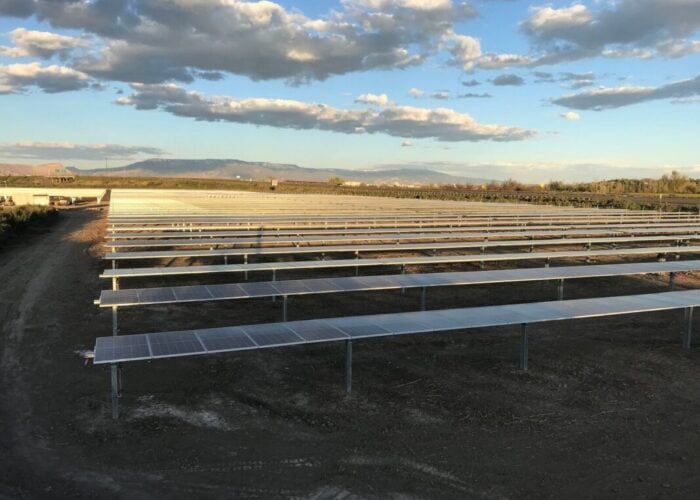
Government support for expanding a domestic solar manufacturing value chain could create up to 60,000 jobs in Australia, according to a report commissioned by the Australian Manufacturing Workers’ Union (AMWU).
The report identified access to capital and upfront investment as the key method by which the government could support the expansion of a PV manufacturing industry in Australia, given the cost of entering the already saturated and mature solar industry.
Try Premium for just $1
- Full premium access for the first month at only $1
- Converts to an annual rate after 30 days unless cancelled
- Cancel anytime during the trial period
Premium Benefits
- Expert industry analysis and interviews
- Digital access to PV Tech Power journal
- Exclusive event discounts
Or get the full Premium subscription right away
Or continue reading this article for free
The report – titled Towards a Renewable Energy Superpower and conducted by research firm SGS Economics & Planning on behalf of the AMWU – said: “An Australian equivalent of the US Inflation Reduction Act (IRA) level of funding is essential if Australia is to fulfil its aspirations to be a renewable energy superpower.”
It follows the announcement of the Solar Sunshot programme by Prime Minister Anthony Albanese last month. The scheme is a AU$1 billion (US$662 million) package of grants and subsidies designed to encourage companies to establish solar manufacturing facilities in Australia.
Currently, Australia’s presence in the solar manufacturing chain is restricted to raw materials—quartz and silica mining—and research and development (R&D) institutions. Research from the Australian Renewable Energy Agency (ARENA) from February found that a broader manufacturing base was “feasible” but that, currently, the country only had the capacity for a relatively negligible 160MW of module production.
The report outlines the opportunities for polysilicon refinement and ingot, wafer, cell, module and frame manufacturing, and the concurrent benefits for economic development, deployment and energy security.
In particular, it focused on the potential for “significantly decarbonised PV supply chains” by supporting energy-intensive polysilicon production with domestically made modules and the opportunities for an end-of-life sector.
Reports have emerged this week that the issue of solar module waste is “more immediate than previously anticipated” in Australia, as the high penetration of distributed rooftop PV systems across the country age, break or get replaced (premium access).
Global solar supply
As with the US IRA, Europe’s Net Zero Industry Act (NZIA) and India’s Production Linked Incentive (PLI), the report’s proposals are founded on the desire to shift away from the solar industry’s overwhelming reliance on Chinese production.
The report identifies that “China currently manufactures more than 80% of PV system components and an even higher share of other parts of the supply chain, including 98% of silicon wafers.”
Relying on a single source for supply naturally exposes the supply chain to insecurities and disruptions. However, the global solar manufacturing industry is over-producing quite considerably; a Bloomberg report earlier this year found that no new solar manufacturing capacity would be needed to meet global demand through 2030. The “supply glut…weakens the case for localising production in markets with little existing solar manufacturing,” the report said.
Even the US$369 billion IRA has come under scrutiny recently as it seemingly struggles to attract upstream manufacturers and, according to the CEO of Cadmium Telluride (CdTe) thin-film manufacturer First Solar, can benefit the dominant Chinese-owned companies without establishing independent domestic energy security.
Whilst Albanese’s Sunshot will be met with favourable reactions by the Australian solar sector, it does not come close to the scale of the IRA.
To have the desired effect that the AMWU report outlines, the Australian government will need to give significantly more financial and political support to domestic production. The report says that there is significant demand for domestically-made modules in Australia but does not address the demonstrable cost disparities between Chinese modules and those made anywhere else in the world. It proposes that Australia’s R&D pedigree and access to mining and raw materials could allow a new industry to define itself against competitor markets.






